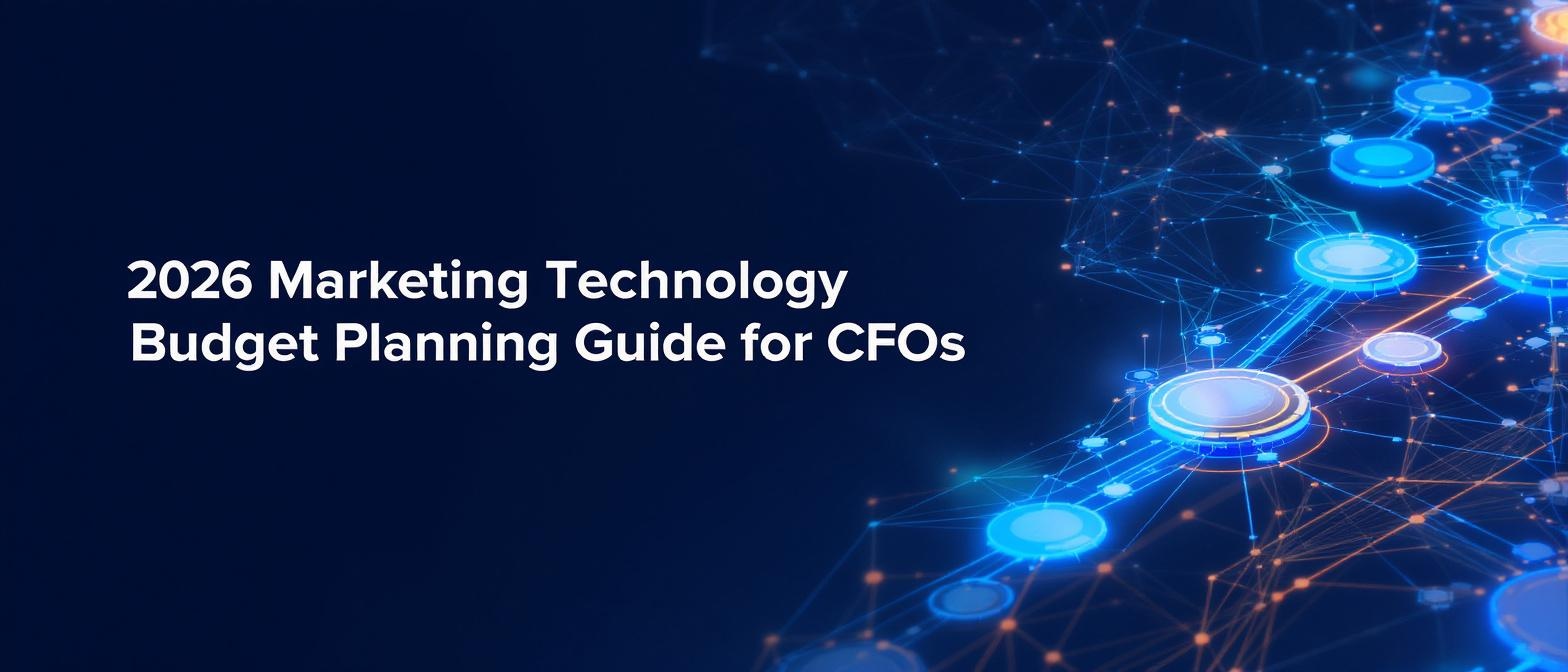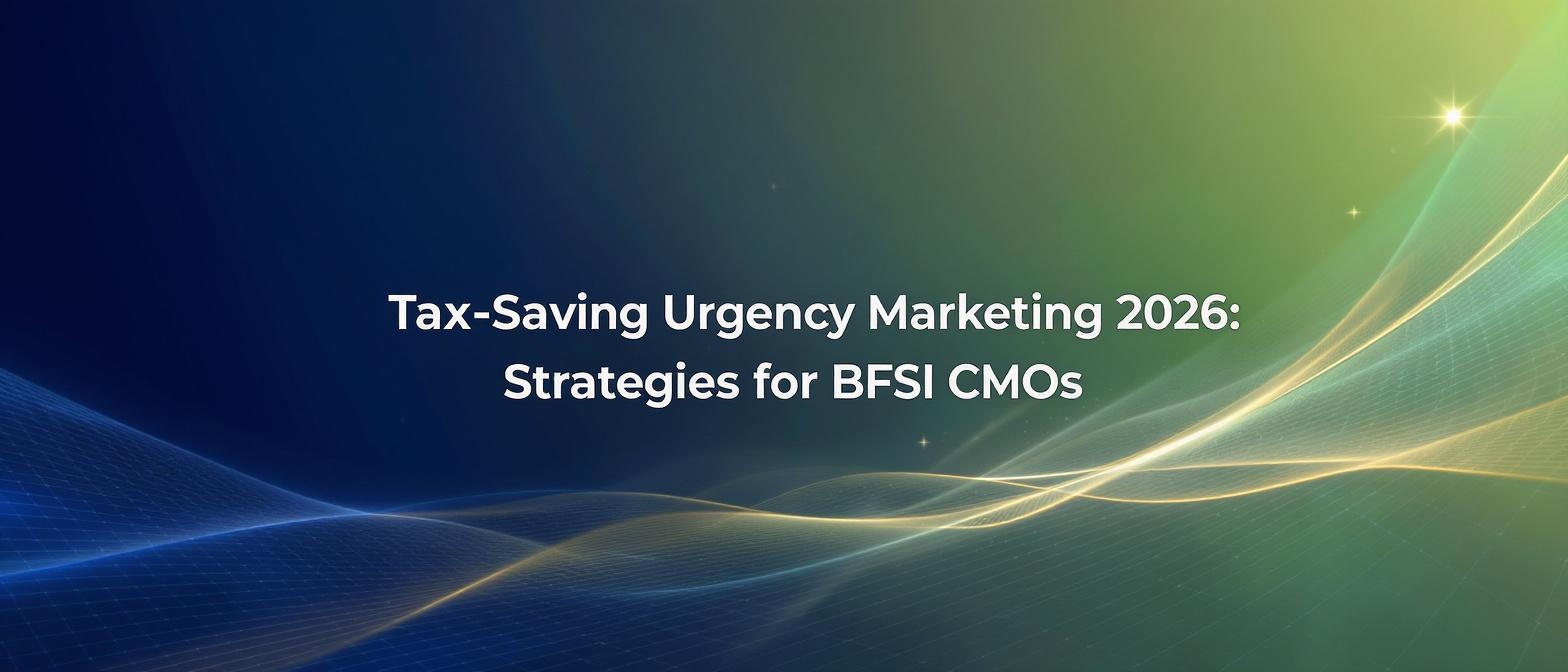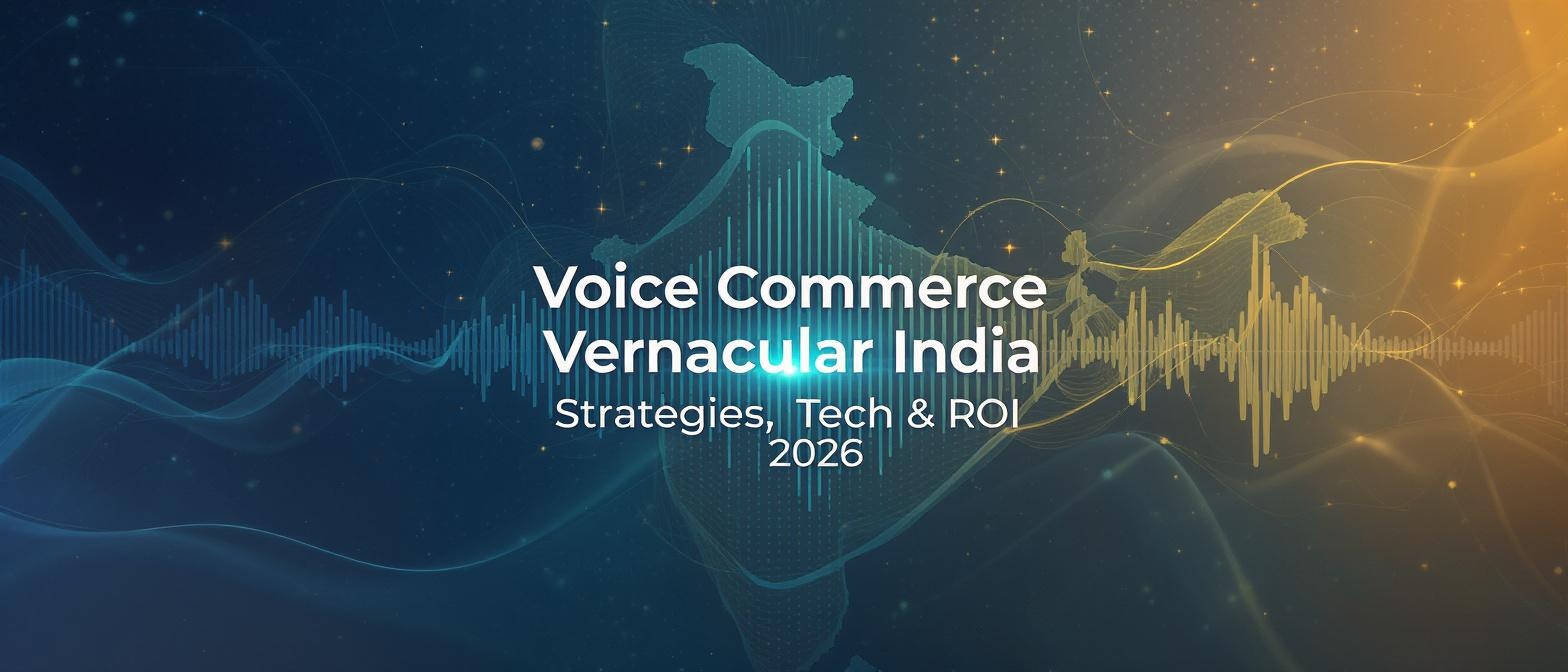2026 Marketing Technology Budget Planning: A CFO’s Guide to Enterprise AI Video & Personalization Investments
Estimated reading time: ~15 minutes
Key Takeaways
- CFOs demand rigorous financial justification for all marketing tech line items.
- AI-driven video personalization and automation can unlock major efficiency and ROI gains.
- A structured budget approach, such as the 70-20-10 split, balances stability with innovation.
- Justifying investments with clear ROI models and cross-functional alignment is critical for CFO approval.
The strategic, data-driven process of 2026 marketing technology budget planning is underway, compelling CFOs and marketing leaders to scrutinize every dollar. This isn’t just about funding channels; it’s about allocating capital toward sophisticated tech solutions—like AI, automation, and video personalization—that maximize ROI and build a sustainable competitive advantage. With marketing budgets in 2025 averaging a significant 9.4% of total company revenues, the C-suite rightfully demands rigorous financial justification for every line item.
For CFOs, the core challenge is twofold: ensuring clear, predictable financial returns and fostering cross-functional alignment on technology adoption. The days of siloed marketing spend are over. Today’s investments in MarTech must integrate seamlessly with sales, data, and IT to create a cohesive growth engine. As we look toward 2026, the focus sharpens on technologies that don’t just promise engagement but deliver quantifiable business outcomes.
This guide provides a comprehensive framework for navigating the complexities of enterprise technology spending in 2026. We will dissect the financial models, justification frameworks, and strategic allocation principles needed for CFO marketing budget approval, with a special focus on the transformative power of AI-driven video and personalization.
1. Understanding Enterprise AI Video Marketing Investment
An enterprise AI video marketing investment is the allocation of capital toward advanced platforms that leverage generative AI to produce personalized video content at immense scale. This technology moves beyond generic, one-to-many video ads and into a new paradigm of one-to-one communication, tailored to individual customer data and context. It represents a fundamental shift in how brands build relationships.
The trend is undeniable: enterprises anticipate that up to 44.2% of their marketing activities will be powered by AI by 2026. This adoption is driven by AI’s ability to deliver predictive analytics, automate campaign optimization, and, most importantly, create dynamic content that resonates on a personal level. Platforms like TrueFan AI enable brands to turn this potential into a powerful reality.
Here’s how this technology translates into tangible business capabilities:
- Hyper-Personalization at Scale: Through API-driven templates, customer data such as names, cities, or purchase histories can be seamlessly inserted into high-quality, celebrity-led videos. Imagine a celebrity personally thanking a customer by name for their loyalty or referencing a product they recently viewed.
- Virtual Reshoots for Agility: AI-powered editing allows marketers to change lines of dialogue or update offers within existing video footage without needing expensive and time-consuming new shoots. This capability can save thousands of creative hours—TrueFan estimates savings of approximately 3,888 hours for its partners—and allows for rapid A/B testing and message iteration.
- Seamless Multilingual Localization: The most advanced platforms can translate and localize video content into over 175 languages, complete with perfect lip-sync and voice retention. This eliminates the jarring experience of dubbing and ensures global campaigns feel native to every market.
Leading brands like Zomato, Goibibo, and Hero MotoCorp are already leveraging these capabilities to achieve breakthrough results in customer engagement and conversion.
Source: academyofcontinuingeducation.com
Source: smartinsights.com
2. Q4 Budget Allocation Strategies
Effective Q4 budget allocation strategies involve more than simply spending down remaining funds. It’s a critical opportunity to optimize year-end spend across both proven channels and high-potential experimental initiatives, setting the stage for the upcoming year. A structured approach ensures every dollar is maximized for impact.
A widely adopted and effective framework is the 70-20-10 split:
- 70% for Core Channels: Allocate the majority of your budget to the reliable, high-ROI channels that form the backbone of your marketing engine (e.g., performance marketing, SEO, core content).
- 20% for Growth Opportunities: Dedicate this portion to proven but scalable growth areas. This is the ideal category for expanding investments in AI video personalization and marketing automation, which have demonstrated initial success and are ready for broader implementation.
- 10% for Innovation and Testing: Reserve a small fraction for purely experimental initiatives. This could include testing new generative AI platforms, emerging social channels, or unconventional campaign concepts.
This model balances stability with innovation, but it requires agility. To that end, advocate for quarterly budget reviews supported by real-time analytics. This practice allows marketing and finance teams to pivot quickly, reallocating funds from underperforming tests to channels that are exceeding forecasts.
Template for Q4 Budget Review Meeting Agenda:
- Recap of Quarterly KPIs: Review performance against key metrics (CAC, LTV, MQLs, conversion rates).
- Performance vs. Forecast Analysis: Identify which channels and campaigns over-performed or under-performed against the financial plan.
- Presentation of Rebalancing Proposals:
- Argument for shifting funds from underperforming areas.
- Business case for increasing investment in over-performing or high-potential channels (e.g., “Our AI video pilot exceeded conversion goals by 30%; we propose allocating an additional $50K to scale it in Q1.”).
- Updated Forecast and Next Steps: Present revised projections based on proposed reallocations and outline the execution plan.
Source: thinkwithgoogle.com
Source: academyofcontinuingeducation.com
3. AI Video Marketing Budget Justification
An AI video marketing budget justification is the formal, data-backed argument presented to finance and leadership that demonstrates the incremental financial value of AI-enriched video compared to traditional video production. To win CFO approval, the focus must be on quantifiable returns, not just creative novelty. A clear, simple ROI model is the most powerful tool in your arsenal.
ROI Calculation Model for AI Video Personalization:
- Calculate Incremental Conversions:
Formula: (AI Video Conversion Rate – Baseline Video Conversion Rate) x Volume of Impressions
This isolates the direct lift attributable to the personalization technology. - Calculate Incremental Revenue:
Formula: Incremental Conversions x Average Order Value (AOV)
This translates the conversion lift into top-line revenue impact. - Calculate Final ROI:
Formula: ((Incremental Revenue – Incremental Cost of AI Video) / Incremental Cost of AI Video) x 100
This provides a clear percentage return that speaks directly to a CFO’s priorities.
Real-World Example: TrueFan client Goibibo implemented a campaign using personalized videos featuring cricketer Rishabh Pant to re-engage users who had searched for trips but not booked. These videos resulted in a 17% higher WhatsApp message read rate compared to standard text-based notifications. This initial engagement lift directly translates to a higher number of users returning to the booking funnel, driving incremental revenue.
When preparing your presentation deck for the CFO, structure your argument logically:
- Historical Performance: Show baseline metrics from past video campaigns.
- Peer Benchmarks: Include industry data or competitor case studies on personalization.
- Cost Breakdown: Clearly outline platform fees, per-video costs, and integration expenses.
- Projected Uplift: Use the ROI model above to project incremental revenue and ROI based on a pilot or industry data.
Source: thinkwithgoogle.com
4. Marketing Automation ROI Planning
Marketing automation ROI planning focuses on quantifying the financial benefits derived from automating workflows, which typically fall into two categories: cost savings and revenue generation. These platforms reduce manual labor, minimize human error, and accelerate campaign deployment, all of which have a measurable bottom-line impact. A clear ROI calculation is essential for justifying the subscription and implementation costs.
By 2026, automation is projected to account for 15-30% of a company’s marketing technology stack budget. This significant allocation demands a rigorous approach to proving its worth.
Formula for Automation ROI (Cost Savings Focus):
- Calculate Annual Savings:
Formula: ((Hours Saved per Week x 52) x Average Employee Hourly Cost) + Annual Cost Avoidance from Error Reduction
This captures both direct labor savings and the financial impact of preventing costly mistakes. - Calculate ROI:
Formula: ((Annual Savings – Annual Tool Cost) / Annual Tool Cost) x 100
High-Impact Automation Use Cases for ROI Justification:
- Automated Lead Scoring and Nurturing: By automatically qualifying leads and delivering targeted content drips, automation frees up sales and marketing teams to focus on high-value prospects, increasing conversion rates and sales velocity.
- Personalized Email Drip Campaigns: Automating welcome series, abandoned cart reminders, and re-engagement campaigns generates revenue with minimal ongoing manual effort.
- Dynamic Ad Personalization: Integrating automation platforms with ad networks allows for the real-time personalization of ad creative based on user behavior, significantly boosting click-through rates and return on ad spend (ROAS).
Source: academyofcontinuingeducation.com
5. Enterprise Technology Spending in 2026
Enterprise technology spending in 2026 refers to the total investment in MarTech and its associated IT infrastructure, which is rapidly becoming one of the largest line items in the marketing budget. As marketing becomes more data-driven and technology-centric, this spending category is critical for maintaining a competitive edge.
Forecasts indicate that MarTech will consume between 15% and 30% of the average marketing budget by 2026. For large enterprises, this can translate to expenditures exceeding $200,000 per month. This isn’t just spending on a CRM; it’s an investment in a complex, interconnected ecosystem of tools.
Prioritized Investment Areas for 2026:
- AI-Powered Analytics: Platforms that can process vast datasets to uncover predictive insights, optimize media spend, and forecast customer behavior.
- Customer Data Platforms (CDPs): A central nervous system for customer data, enabling a unified, 360-degree view that fuels personalization across all touchpoints.
- Personalization Engines: Tools that dynamically alter website content, product recommendations, and in-app experiences for individual users.
- Generative Video Platforms: As discussed, technologies that enable the creation of personalized video content at scale, moving beyond static ads to dynamic, one-to-one conversations.
Typical Breakdown of 2026 Enterprise MarTech Spend:

- Analytics & Data (30%): Includes CDPs, data warehousing, and predictive analytics tools.
- Personalization & Experience (25%): Includes personalization engines, dynamic content optimization (DCO), and generative video platforms.
- Automation & Orchestration (20%): Includes marketing automation platforms, email service providers, and customer journey mapping tools.
- Content & Creative AI (15%): Includes AI-powered content creation, digital asset management (DAM), and collaboration tools.
- Management & Governance (10%): Includes project management software, budget tracking tools, and data privacy compliance platforms.
Source: academyofcontinuingeducation.com
Source: business.adobe.com
6. The 5-Step CFO Marketing Budget Approval Process
Securing CFO marketing budget approval, especially for significant technology investments, requires a structured, financially rigorous process. CFOs are tasked with managing risk and maximizing shareholder value, so a marketing proposal must be framed in terms of growth, efficiency, and measurable return. Shifting the conversation from “we need this tool” to “this tool will unlock X% revenue growth” is paramount.
Follow these five steps to build an unassailable business case:
-
Develop the Business Case:
Strategic Objectives: Clearly state the business goals (e.g., “reduce customer churn by 15%,” “increase lead-to-sale conversion rate by 20%”).
KPIs: Define the specific metrics you will use to measure success.
Financial Model: Build a detailed model projecting costs, expected revenue lift, cost savings, and the final ROI percentage. -
Conduct Peer and Industry Benchmarking:
Show how your competitors or industry leaders are using similar technologies.
Cite third-party data and case studies (e.g., “According to Forrester, personalized video can increase click-through rates by up to 500%”). This validates your projections. -
Perform a Risk Assessment and Compliance Review:
Proactively identify potential risks (e.g., implementation challenges, data security, vendor viability) and present mitigation strategies.
Ensure the proposed technology is compliant with data privacy regulations like GDPR and CCPA. For example, platforms that are ISO 27001 and SOC 2 certified offer a higher level of trust. -
Deliver the CFO Presentation:
Use clear, concise visuals and avoid marketing jargon.
Include scenario analysis (best-case, expected, worst-case) to demonstrate you’ve considered all outcomes.
Focus on the financial narrative: how this investment directly contributes to the company’s P&L statement through revenue growth or cost efficiencies. -
Establish Approval, Tracking, and Governance:
Once approved, work with finance to set up clear tracking mechanisms.
Schedule regular (quarterly) review meetings to report on performance against the projected ROI, ensuring ongoing accountability.
Source: thinkwithgoogle.com
7. AI Personalization Technology Investments
AI personalization technology investments are funds allocated to the software and platforms that enable a brand to tailor content, offers, and entire experiences to an individual user’s behavior, preferences, and history. While personalization has roots in email marketing (using a customer’s first name), modern AI has expanded its scope exponentially to websites, mobile apps, and, most powerfully, dynamic video.
The goal is to move from segment-based marketing to true one-to-one communication, creating a feeling of individual recognition and value that fosters deep loyalty. This is where cutting-edge generative AI platforms provide a decisive advantage. For example, TrueFan AI’s 175+ language support and Personalised Celebrity Videos allow brands to create millions of unique video messages that speak directly to each customer.
The business impact of this hyper-personalization is profound and measurable:
- Reduced Churn: A telecom client saw a 50% reduction in customer churn after implementing a retention campaign that used personalized videos to acknowledge loyalty and present tailored offers.
- Increased Engagement: Media group Dainik Bhaskar achieved a 3.2x lift in contest participation by using personalized celebrity videos to invite readers, making the call-to-action feel like a personal request.
These investments are backed by a robust and secure infrastructure. TrueFan, for instance, has delivered over 1.5 million videos to more than 5 million users, all powered by an ISO 27001/SOC2 certified framework that ensures data privacy and security—a critical consideration for any enterprise technology adoption.
Source: smartinsights.com
8. Marketing Technology Investment ROI Calculation
A sophisticated marketing technology investment ROI calculation goes beyond simple last-click attribution. It requires an integrated measurement framework that connects technology spending to long-term business value metrics, providing a holistic view of performance. This is crucial for justifying ongoing investment and for optimizing the entire MarTech stack.
A Modern ROI Measurement Framework:
-
Input Metrics:
Track spend by individual tool, platform, and channel.
Include associated costs like implementation fees, training, and personnel hours. -
Output Metrics:
Customer Lifetime Value (CLV): The ultimate measure of long-term value. Track how CLV changes for cohorts exposed to new technologies.
Incremental Sales: Use marketing mix modeling (MMM) or controlled lift studies to isolate the revenue generated by specific tech investments.
Net Promoter Score (NPS) Uplift: Measure the impact on customer satisfaction and loyalty, which are leading indicators of future revenue. -
Attribution and Analysis:
Multi-Touch Attribution (MTA): Move beyond last-click to models (linear, time-decay, U-shaped) that assign credit to all touchpoints in the customer journey. This provides a more accurate view of how different technologies contribute to conversion.
Cohort Analysis: Group customers by when they were acquired or exposed to a specific campaign. Analyzing the behavior of these cohorts over time reveals the long-term impact of your investments.
Solutions like TrueFan AI demonstrate ROI through clear A/B testing and direct attribution, where the performance of personalized video campaigns can be compared directly against control groups receiving standard marketing messages.
Sample ROI Dashboard Fields:
- Spend by Platform: Total cost allocated to each MarTech tool.
- Impressions/Reach: The top-of-funnel impact.
- Conversions (Attributed): Conversions credited to the platform via your attribution model.
- Cost Per Acquisition (CPA): Spend divided by attributed conversions.
- Average CLV by Cohort: Lifetime value of customers acquired through the platform.
- Final ROI %: (CLV – CPA) / CPA x 100.
Source: thinkwithgoogle.com
9. Video Personalization Budget Planning
Video personalization budget planning involves assigning dedicated budget lines for the key components of a generative video strategy: platform licensing, per-unit production costs, and ongoing support. Breaking the budget down into these distinct elements provides clarity for finance and ensures all aspects of the program are properly funded.
Recommended Budget Structure:
- Platform & Setup Fees: This typically includes one-time costs for initial setup, API integration with your existing CRM or CDP, and any required onboarding or training for your team.
- Per-Video Generation Cost: Most enterprise platforms operate on a usage-based model. This is often priced on a CPM (cost per thousand videos) basis, which becomes highly cost-effective at scale.
- Support & Analytics Subscription: An ongoing fee for technical support, platform maintenance, and access to performance analytics dashboards.
Illustrative Pricing at Scale:
To put this in perspective, consider a large-scale campaign aiming to generate one million personalized videos. A platform like TrueFan might price this at ₹15 per video. The total cost would be ₹15 million (approximately $180,000 USD). While a significant investment, this is comparable to the media spend for a single national TV ad campaign, but with the massive advantage of one-to-one personalization and direct measurability.
Phased Budgeting Approach:
For organizations new to this technology, it’s wise to plan a phased ramp-up:
- Phase 1: Pilot (First 10,000 Videos): A limited-scope test to validate the technology and establish baseline ROI metrics.
- Phase 2: Scale (100,000 – 500,000 Videos): Expanding the program to a larger audience segment based on successful pilot results.
- Phase 3: Enterprise (1M+ Videos): Full-scale integration into core marketing campaigns across the customer lifecycle.
This phased approach de-risks the investment and allows you to build a data-backed case for each successive stage of funding.
Source: hubspot.com
Conclusion & Next Steps
The landscape of 2026 marketing technology budget planning is defined by a clear mandate: every investment must be strategic, justifiable, and directly linked to financial outcomes. The era of speculative MarTech spending is over, replaced by a CFO-driven focus on efficiency, growth, and provable ROI. As this guide has demonstrated, technologies like AI-driven video and hyper-personalization are no longer on the experimental fringe; they are core drivers of competitive advantage.
By adopting a rigorous framework for strategic allocation, building unassailable ROI justifications, and future-proofing your tech stack with scalable platforms, you can navigate the budget approval process with confidence. The key is to shift the narrative from marketing as a cost center to a powerful, technology-enabled engine of enterprise growth.
Ready to build your business case for AI-powered video personalization?
- Download TrueFan’s Enterprise brochure to explore our capabilities.
- Schedule a Demo to see our platform in action.
- Request a Custom ROI Model Workshop with our experts to map out the financial impact for your business.
Frequently Asked Questions
1. How can we build flexibility into our annual marketing budget to adapt to new technologies or market shifts?
The best practice is to move away from a rigid annual plan and implement quarterly budget reviews. By analyzing real-time performance data every three months, you can reallocate funds from underperforming initiatives to more promising opportunities, ensuring your budget remains agile and optimized throughout the year.
2. What is the most common mistake companies make when investing in new marketing technology?
The most common mistake is investing in a tool without a clear strategy for integration and adoption. A powerful platform is useless if it doesn’t integrate with your existing data systems (like your CDP or CRM) or if your team isn’t trained to leverage its full capabilities. Always budget for integration and training alongside the license fee.
3. How do you measure the ROI of emerging technologies like generative AI that may not have established benchmarks?
For emerging tech, use a “pilot and scale” approach. Run a small, controlled experiment with a clear hypothesis and a defined control group. Measure the lift in key metrics (e.g., conversion rate, engagement) against the control group. This provides a clear, data-backed justification for a larger investment.
4. How can platforms like TrueFan AI help with the CFO marketing budget approval process?
Platforms like TrueFan AI provide detailed case studies and performance data from existing enterprise clients (e.g., 17% higher read rates for Goibibo, 3.2x engagement lift for Dainik Bhaskar). This third-party validation and concrete ROI proof helps de-risk the investment in the eyes of a CFO and provides credible benchmarks for your own financial projections.
5. How important is data privacy and compliance (like SOC 2) when selecting an AI vendor?
It is absolutely critical. In today’s regulatory environment, a data breach or compliance failure can result in massive fines and irreparable brand damage. Partnering with vendors who have achieved certifications like ISO 27001 and SOC 2 is non-negotiable. It demonstrates a commitment to enterprise-grade security and protects both your company and your customers.
6. Beyond ROI, what other metrics should we present to justify a personalization technology investment?
While ROI is paramount, also present metrics that reflect long-term brand health and customer loyalty. These include Customer Lifetime Value (CLV), Net Promoter Score (NPS), and customer churn reduction. Framing the investment as a driver of both short-term revenue and long-term customer relationships creates a more compelling and holistic argument.





